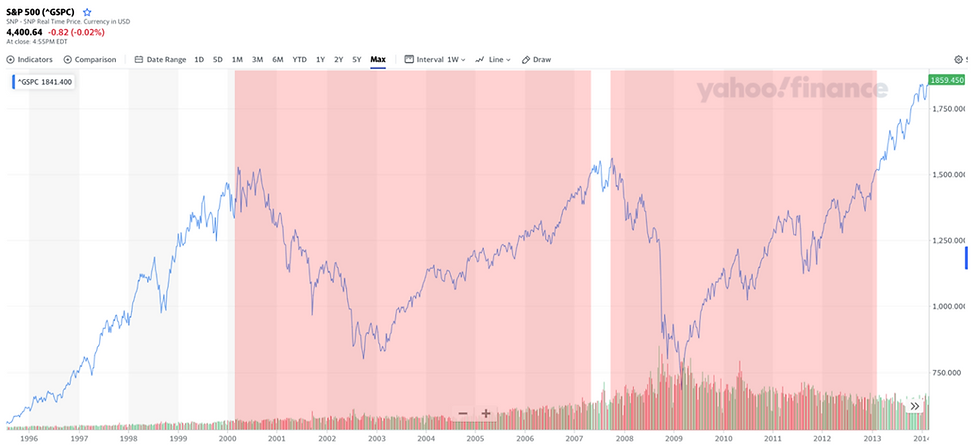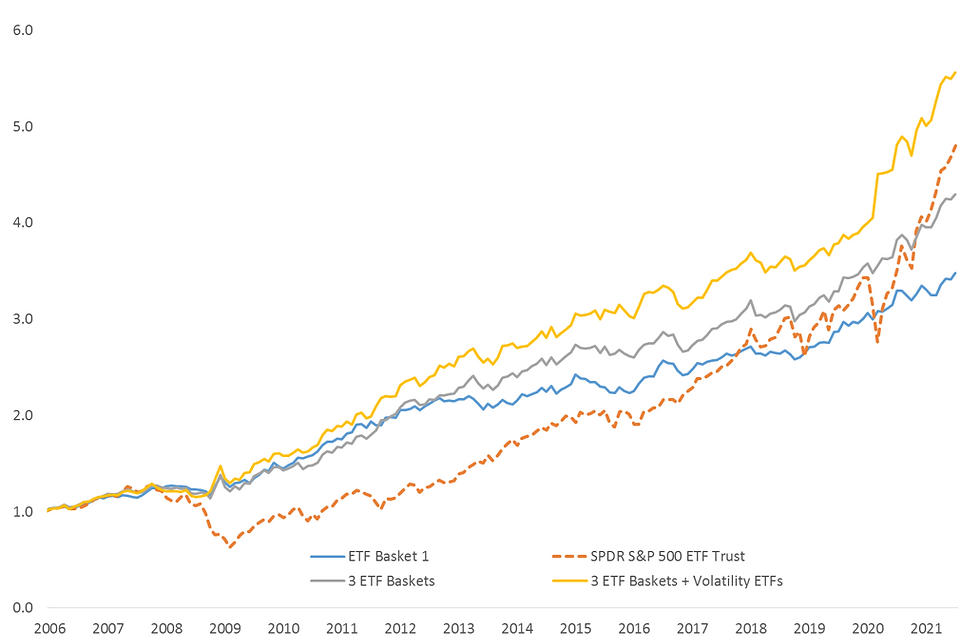Invest as Hedge Funds Do with this Simple ETF Trading Strategy
- Ou Da Wei
- Sep 24, 2021
- 4 min read
Updated: Oct 3, 2021
You may grow your wealth with an ETF portfolio strategy based on a Nobel Prize winner. We make it simple for you to run too. Here’s how.
In search of better returns navigating through years of market volatility, investors have resorted to shorter-term strategies in hope that their investments can better react to market movements and crises. Yet with families and careers, many often find it challenging to grow their wealth amid the trading complexities that arrive.
But there is good news. In the world of hedge funds, there lies a simple ETF trading strategy that even everyday investors with busy commitments can implement. You do not have to trade as often as daily or weekly for your investments to swiftly react to the market. You also need not worry substantially about market crises, as long as your ETFs are structured to guard against or even benefit from them! In collaboration with AllQuant, an investment education firm whose founders came from a Singapore-based hedge fund, here is how you can employ a simple yet effective investment trading strategy for yourself.
Aim to Minimize your ETF Risks for Return
Many investors unknowingly grow their money in ways that take on unnecessarily high levels of risk. These include common traditional buy-and-hold strategies, as well as more complex methods like swing and momentum trading. While these can potentially lead to great returns, they also come at a risky price – one wrong step and you could be in the negative zone for years. A good example is the 2008 Financial Crisis, where some US market investors were negative in profits for as long as 5 to 7 years (Chart 1).
Chart 1: Down periods from investing in the S&P 500

A good workaround is to buy more during market downturns. Yet with issues ranging from a shortage of spare cash to having no assurance amid an influx of emotional market news, not everyone carries out the dip-buying strategy consistently.
A simple alternative, rather, is to employ positions that help decrease the fluctuations in your total portfolio value. When you manage to decrease your portfolio's volatility while still using a basket of ETFs that fundamentally grow in the long run, you decrease your overall risks while still keeping a good portion of your long-term return potential.
In other words, it is all about optimizing your risks for return.
Consider Utilizing the Nobel Prize-Winning Model
Learning from Modern Portfolio Theory (MPT) developed by economist Harry Markowitz which later won the Nobel Prize for changing the way the world invests, investors can effectively select and rotate between different ETF allocations to optimize for a good risk-to-return ratio.
For example, an investor considers 5 ETFs he believes can grow well in the long term (Table 1).
Table 1: Single Basket of ETFs

When mixing different allocations of these ETFs together, your portfolio’s total risk-to-return ratio is different. This is represented by a measure called Sharpe Ratio (Table 2), which the higher the better.
Table 2: Allocating among the 5 ETFs

From Table 2, Allocation 3 gives the best Sharpe Ratio for the investor. Among the 3 allocation options, this is what the professional would use.
Reacting to the Changing Market
Next, after investors have found their ideal starting ETF allocation, it is important to recognize that this allocation is based on behavior that tends to persist only for periods as long as a few weeks to a few months.
Therefore, it is important to regularly review ideal allocations and do a simple rebalancing of your ETFs every now and then. A good ETF selection can help you only require trades approximately once or twice a month.
Chart 2: Good ETF allocation achieving smoother performance

Over time, investors would find that they have a smoother performance that is more resistant to market volatility (Chart 2). You can worry less about market fluctuations and about entering the market at an ‘unlucky’ time.
For Higher Return Potential, Enhance your Portfolio
On top of having a portfolio that hedges well against market fluctuations, investors can go one step further to enhance their portfolios. The example above shows how a single basket of ETFs can be used to create an ETF strategy.
If we take this basket and combine it with other baskets holding different sets of ETFs, our overall return potential can increase even further (Chart 3).
For example, we can use 3 baskets of ETFs in the following manner:
Table 3: More ETF Baskets

Combining multiple ETF baskets can increase your Sharpe Ratio even further (Table 3). Over time, better performance can be achieved for your investments (Chart 3).
Chart 3: Enhancing performance from using more ETF baskets

Easy Implementation for You
With many investors having a busy personal lifestyle, the key to running this strategy is many times convenience and simplicity. Therefore, you can opt for the strategy’s portfolio actions to be derived for you alongside a process to keep you notified of any trade actions. On top of using 3 baskets of ETFs akin to the example above, this service provided in collaboration with AllQuant also further boosts your portfolio using Volatility ETFs. You can read more about this Multi-Strategy ETF trading strategy and view its model performance here.

Recording success in Cryptocurrency, Bitcoin is not just buying and holding till when bitcoin sky-rocks, this has been longed abolished by intelligent traders ,mostly now that bitcoin bull is still controlling the market after successfully defended the $20,000 support level once again ad this is likely to trigger a possible move towards $40,000 resistance area However , it's is best advice you find a working strategy by hub/daily signals that works well in other to accumulate and grow a very strong portfolio ahead. I have been trading with Mr Bernie doran daily signals and strategy, on his platform, and his guidance makes trading less stressful and more profit despite the recent fluctuations. I was able to easily increase my portfolio…